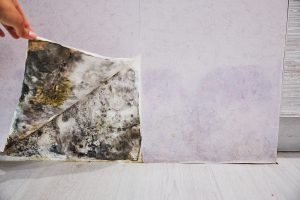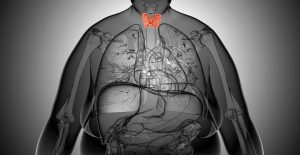Mold-related illness was first described almost 50 years ago when it was labeled sick building syndrome. It was met with incredible hostility from the medical profession (because there were no positive test results to verify any diagnosis) and from employers and building owners (who thought affected people were seeking financial gain or special favors). What […]
Category: Natural Apothecary
Natural apothecaries offer a wide array of natural products including pharmaceutical-grade nutritional supplements, essential oils, Chinese and Western herbs, homeopathic remedies, flower essences, natural body care, and books.
Root Causes of Chronic Fatigue, Part 2: Minimally Underactive Thyroid
I went to medical school in London for a while and truly it was great fun. This was the 1960s–Beatles, Stones, Carnaby Street–and if you were going to be anywhere on the planet, central London was it. The newly released thriller “Last Night in Soho” really captures the atmosphere. Middlesex, my assigned hospital, was located […]
I Feel So Inflamed!
Previously, I wrote about mold-related illness, yet another commonly overlooked diagnosis. It’s surprising how regularly mold issues fly under the radar of conventional physicians. When you consider how often homes and workplaces have a leaky roof, unless something smells moldy or we discover creeping black stains somewhere we often don’t think of mold. Moreover, because […]
The Flu: How To Recognize It and What to Do
It’s here, folks, and this year could be a doozy. How do we know? We keep a watchful eye on Australia, whose winter and flu season occur six months before our own. The New York Times reported that “In 2017, a terrible flu season in Australia presaged an American outbreak in which 79,000 died. Experts […]
Dandruff, Fungi, and Cancer of the Pancreas
It’s an eye-catching title, I’ll admit. But the links are quite real and further research may guide medicine in new directions of cancer prevention and treatment. It all starts in your gut microbiome, the totality of microorganisms–bacteria, viruses, protozoa, and fungi–present in your gastrointestinal (GI) tract, mouth to anus. Until recently, researchers and clinical physicians […]
Welcoming (Back) Christine Savas
It’s a source of pride when one of our staff employees, like a medical assistant or someone working in patient or financial services, thinks, “I like WholeHealth Chicago and I like what they do. I’m going back to school and returning as a health professional.” Twenty five years ago, our very first employee, Mari Stecker, managed […]
Women and ADHD, Part 2: Can I Treat This Without Meds?
“I lose my keys endlessly. I pay big bucks in unnecessary late fees on bills that I put down somewhere and just forget about. After I finished college, I never read another book–it was just too much work. I can cope with a magazine article, but hardly ever remember what I’ve read. I even have […]
Treating Mold-Related Illness
Last week I wrote about mold-related illness, yet another commonly overlooked diagnosis. It’s surprising how regularly mold issues fly under the radar of conventional physicians. When you consider how often homes and workplaces have a leaky roof, unless something smells moldy or we discover creeping black stains somewhere we often don’t think of mold. Moreover, […]
Commonly Missed Diagnoses: Mold-Related Illness
If you believe you’re suffering some of the chronic symptoms caused by mold exposure, you’ve probably also heard the discouraging mantra, “We can’t find anything wrong with you—all your tests are normal.” You’ve told your doc that you’ve read about toxic mold. You point out that you’ve had some water damage, that some rooms smell […]
The New York Attorney General, Herbs, and You
If you’ve lived in the US for longer than a few weeks, you know there’s just something about attorneys general and their endless quest for publicity. After all, jailing petty criminals must become tedious and if you’ve got any political ambition at all you need to set your sights higher. Seeing the words “attorney general” […]
Menopause and Acupuncture: Great News For Women
Some women sail through menopause like they’re traversing the calm waters of Walden Pond. You know who you are. First, your periods seem to be changing a little–shorter, longer, irregular, but overall not worth much thought. Then one day you realize you haven’t had one in months. “Well,” you think to yourself. “That was a […]
Reversing the Potbelly of Male Menopause
This health tip begins with a mildly off-color story. If you’re offended by such things, please skip to paragraph three. During the 1920s and 30s the epicenter of New York City’s intellect and wit was the café at the Algonquin Hotel, with the famed Algonquin Round Table hosting luminaries Dorothy Parker, Alexander Woollcott, and Robert […]
Riboflavin (vitamin B2)
Riboflavin is a water-soluble vitamin which is also known as vitamin B-2 or vitamin G. Riboflavin plays a key role in the metabolism of carbohydrates, fats, and proteins in the body. In the body, riboflavin is converted into flavin mononucleotide (FMN), which is then converted to the coenzyme, flavin adenine dinucleotide (FAD). As part of the electron transport chain in the mitochondria, FAD is central to each cell’s energy production. These two flavoproteins and other enzymes that rely on them are also involved in the metabolism of several other vitamins.
Psyllium
Rich in soluble fiber, psyllium seeds and their husks have long been enlisted to ease constipation and digestive system upset. During the Middle Ages, Arab physicians regularly recommended a formula for constipation that included psyllium as a principal ingredient. Today, a number of studies suggest that psyllium may also be effective in lowering cholesterol, promoting weight loss (it makes you feel full), and aiding numerous other conditions.
Prickly Pear
A symbol of the Rio Grande valley, the prickly pear cactus (genus Opuntia) boasts thorny pads, colorful large flowers, and succulent fruits, and its distinctive image is proudly displayed on the Mexican flag. For centuries, native peoples living in the deserts of Mexico, the southern United States, and parts of South America relied on this robust desert plant for food and healing. Many of these traditions were carried on by European settlers, who then also transported the plant’s seeds to Europe and around the world.
Policosanol
Policosanol is a unique natural product derived from sugar cane wax and beeswax: It has proved effective at reducing cholesterol levels and for some individuals may be a reasonable natural alternative to the commonly prescribed “statin-type” cholesterol-lowering drugs.
Phyllanthus/Ayurvedic Liver support combination
The flowering herb Phyllanthus amarusis indigenous to India, where it has long been used by practitioners of traditional Ayurvedic medicine to treat liver problems. In recent years scientists have discovered compounds in the herb that fight the virus responsible for causing hepatitis B, a chronic and potentially serious liver inflammation that can cause jaundice, fatigue, and other problems. Phyllanthus may contain other as-yet-unidentified substances that protect the liver as well.
Pelargonium sidoides (African geranium)
Commonly known as geranium, Pelargonium sidoides is part of a genus of flowering plants first cultivated in South Africa. Geraniums, which bloom in a variety of shapes and colors, are typically grown for their beauty; and some fragrant species of Pelargonium are used to create perfumes. But the P. sidoides species also offers medicinal benefits. It has a long history in tribal South Africa as being used to treat coughs, upper respiratory infections and gastrointestinal illnesses. P. sidoides is often marketed as EPs 7630 or Umckaloabo, meaning “heavy cough” in Zulu tribal language.
PABA (para-aminobenzoic acid)
An abbreviation for para-aminobenzoic acid, PABA appears to be a component of folic acid, a member of the B family of vitamins. It plays a role in breaking down and using proteins, and in forming red blood cells.
NADH (Nicotinamide adenine dinucleotide)
Nicotinamide adenine dinucleotide, or NADH, is a coenzyme made from Vitamin B2, or niacin. It’s present in all living cells. As a coenzyme, NADH serves an important role in helping enzymes to function as they should. (An Enzyme is a Protein that works like a catalyst in the body to prompt chemical changes in other substances; breaking down food into energy is an example.) Most coenzymes are synthesized from vitamins, and for optimal energy production, the body needs good amounts of them. The coenzyme, NADH, is no exception.

